6 Yoga Poses to Expand Your Heart
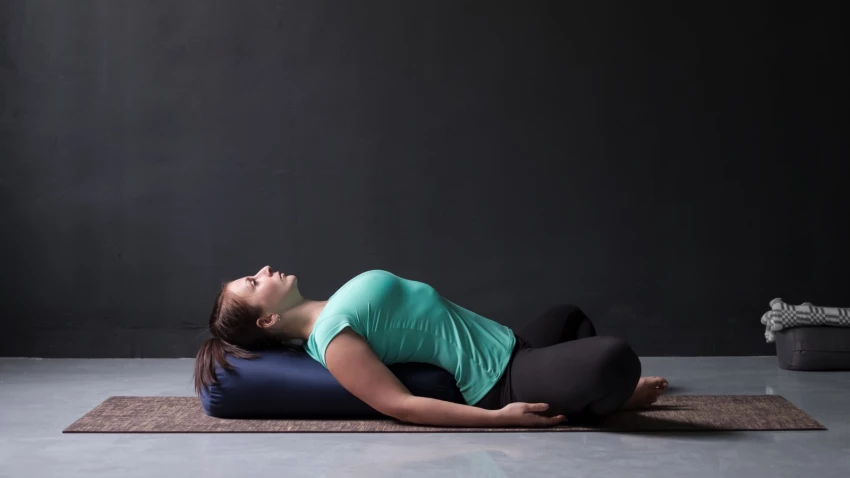
Article At A Glance
Certain yoga poses create a sense of calm; others can uplift energy. Others expand your heart space. Here are 6 yoga poses to help expand your heart space.
Have you ever been in a yoga class when someone (maybe you) experienced a spontaneous emotional event? Sometimes, especially in intensive workshop situations, a new physical opening may trigger an emotional opening. Certain yoga poses can create a sense of calm, others can uplift energy. Others expand your heart space.
Emotions, the Heart and the Body
The Eastern medical model posits that emotions are stored in specific organs. Here’s a list of organs and their corresponding emotions, according to Chinese medicine:
- Heart, small intestine: Joy
- Spleen, stomach: Worry, overthinking
- Lungs, large intestine: Sadness
- Kidneys, bladder: Fear
- Liver, gall bladder: Anger
The theory is, when we stretch and squeeze the tissues around these organs, the emotions stored there can be unleashed. There haven’t been any empirical studies proving this, but it is not uncommon for people to experience emotional release while having bodywork or practicing asanas.
Even though we don’t officially recognize these connections in the West, we have developed a language that describes some of them: “my heart has wings,” “butterflies in my stomach,” “there was a lot of bile in that remark,” “got so scared I peed my pants.” You get the idea.
Mobilizing Your Heart Space
Your yoga practice can support expanding the heart area, and perhaps even unleash some joy into your day. Practicing poses that mobilize and expand the ribcage can help us create space in that area.
The ribcage is the structure that houses the heart. Mobilizing the thoracic spine, to which the ribs are attached, is the most effective way to create spaciousness for the heart.
Breathing and Heart Health
Deep, abdominal breathing—as opposed to shallow, upper chest breathing—is essential to maintaining heart health. In Donna Farhi’s The Breathing Book (1), she explains the relationship between breathing and heart health:
“There have been a number of significant studies showing a correlation between upper chest breathing and heart disease. In one stunning report, patients who had already experienced a heart attack were taught how to breathe diaphragmatically and to generalize this behavior in everyday activities. In doing so they significantly reduced their chances of having a second heart attack.”
Deep, diaphragmatic breathing depends on chest and abdominal mobility. In this post, we’ll explore six poses that expand and mobilize the ribcage and abdomen to promote free breathing and open-heartedness.
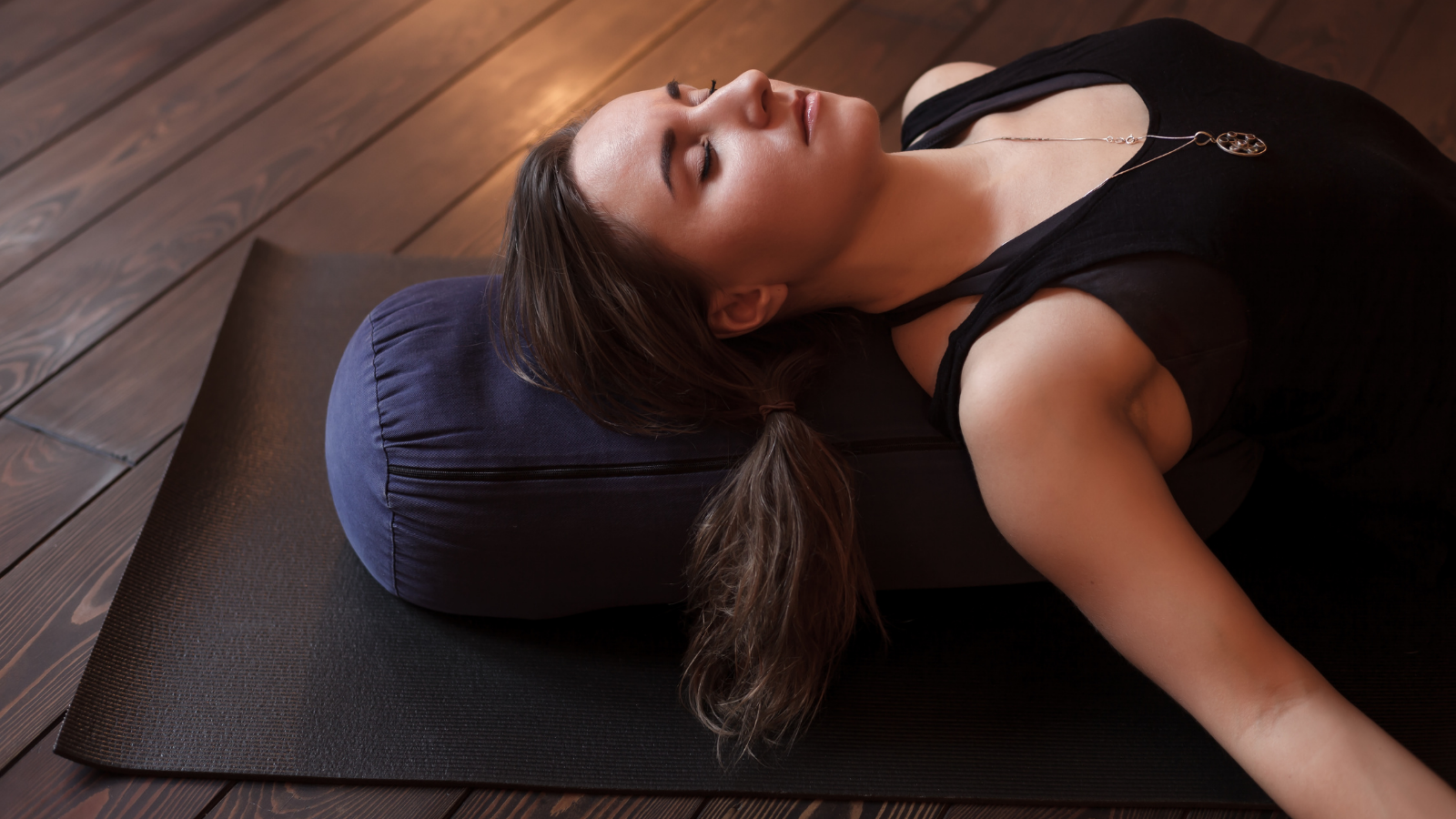
How to Expand Your Heart Space With Yoga
The first step to expanding your heart space is to mobilize the ribcage. There are many, many poses in asana practice that can mobilize the ribcage. The poses I suggest below can stand for other poses in their class—lateral bending, twisting, and backbending. I’ve chosen relatively simple practices because part of expanding the heart is being kind to your body.
Gather together some props, including a yoga mat. Add a couple of yoga blocks and one or more yoga blankets for the third pose. If you have a yoga bolster, you can use it for Relaxation Pose (Savasana).
6 Heart-Opening Yoga Poses
Palm Tree Pose (Talasana)
Mobilizing the ribcage requires that we mobilize the thoracic spine. The thoracic spine is built for lateral bending. In addition, when we bend to the side, we stretch the soft tissue and create space between the ribs on the opposite side. Since the lungs are also housed in the ribcage, there’s more room to breathe.
- Stand in Mountain Pose (Tadasana) with your feet hip-width apart.
- Raise your arms above your head and grab your right wrist with your left hand.
- Grounding your right foot, bend your torso to the left, elongating the right side of your body.
- Stay for 5 to 10 deep breaths before returning to standing.
- Release your arms and check in with how you feel. Do the two sides of the body feel different?
- Now practice on your other side.
Revolved Belly Pose (Jathara Parivartanasana)
In addition to lateral bending, the thoracic spine is built for rotation. Any twist will help mobilize that section of the spine. There are, of course, lots of wonderful standing and seated twists. But lying down creates a different relationship to gravity, one that allows for easier breathing and, therefore, more mobility.
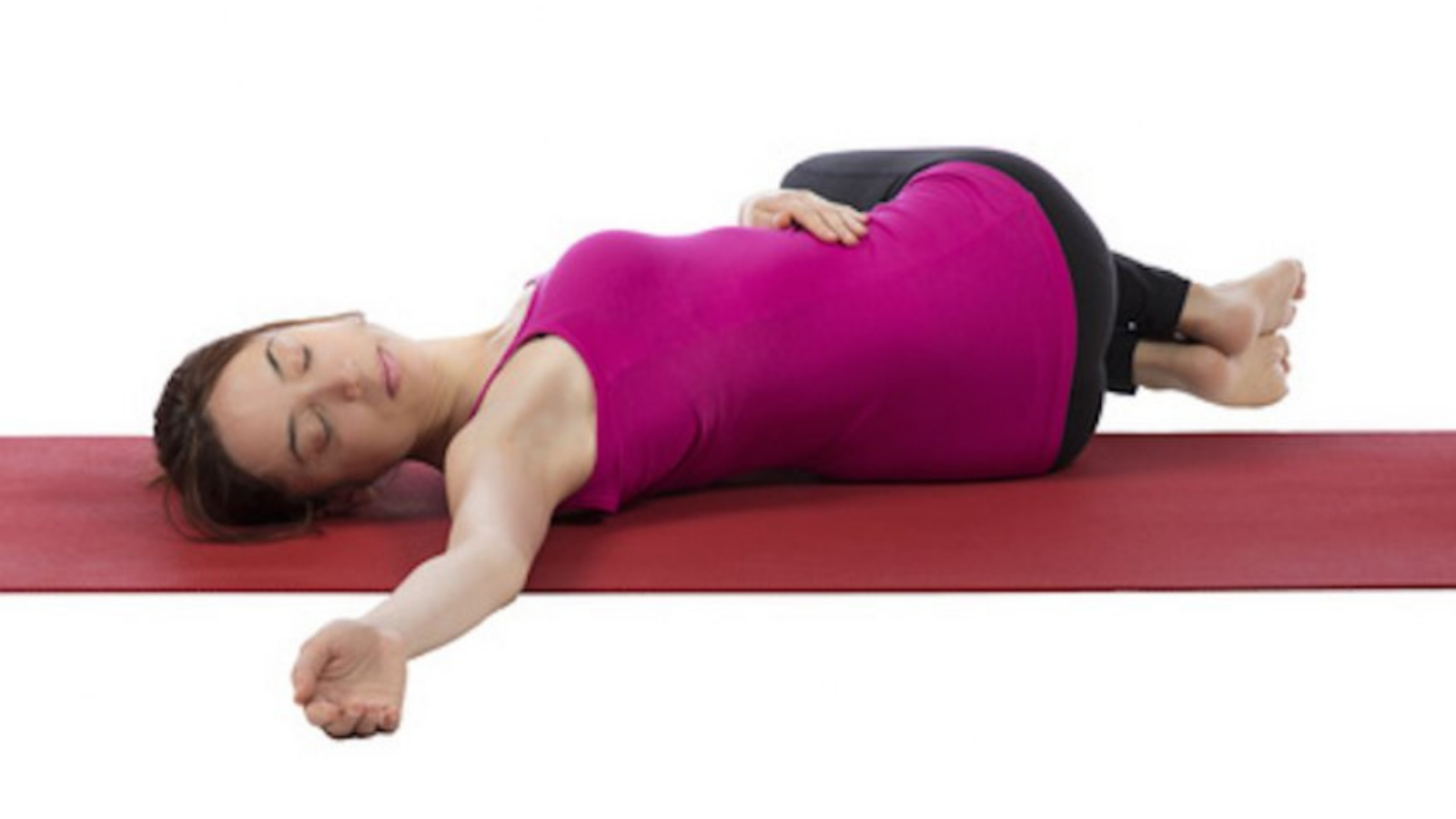
- Lie on your back in Constructive Rest Position (knees bent with the soles of your feet hip-width apart on the floor).
- Extend your arms straight out from your shoulders, palms up.
- Draw your knees gently toward your chest, maintaining your lumbar curve.
- Release your legs over to the left side. Feel free to place a block, bolster or pillow under your knees to elevate them.
- Take 5 to 10 deep breaths.
- Return to Constructive Rest Position and check-in. Feel how your body is lying on the floor. Do the two sides of your torso feel different?
- Practice the pose on the other side.
Supported Fish Pose (Salamba Matsyasana)
Once you’ve mobilized your thoracic spine in the ways it’s designed to move, you can challenge it with a backbend. The thoracic spine doesn’t actually extend much. The facet joints, the joints between each vertebrae, are designed to put brakes on backbending. But that doesn’t mean that you can’t still extend the thoracic spine a bit. Because we all spend so much time hovering over desks, steering wheels, and the like, it wouldn’t be a bad idea to practice this pose every day.
One suggestion: In order for this pose to be comfortable, your head needs to be level, not tilting back. Make sure to put enough blankets under your head and neck to ensure that your neck is relaxed. Then relax and enjoy!
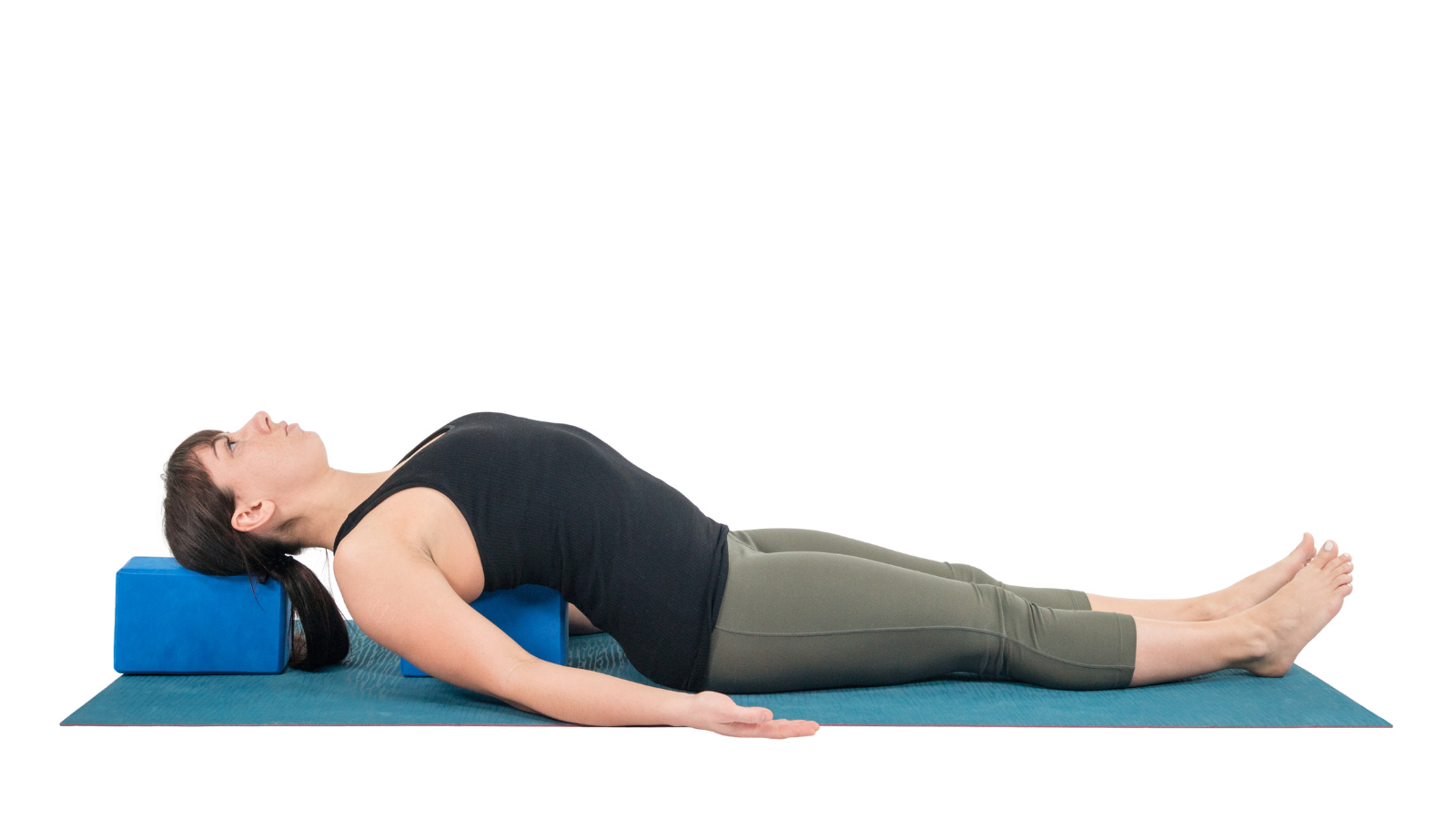
- Gather your props. You can use two blocks and a blanket or a bolster and a blanket. You could also use a rolled-up firm blanket along with a folded blanket.
- Place two yoga blocks on their sides on the head end of your mat, one in front of the other. You may also use a bolster, or two firm blankets folded in a long, narrow rectangle and stacked so that they are four to five inches high. Place your bolster or blanket stack lengthwise on your mat.
- Sit in front of your bolster, blanket stack, or blocks so that your pelvis is eight to ten inches in front of them. Then lean back onto your props so that your lower ribs rest against the front edge.
- If you use blocks, you may feel the edge of the block digging into your back. If you don’t enjoy this sensation, place a blanket or folded towel over your blocks to soften the edges.
- If your head is tilting back, this pose will get uncomfortable fairly quickly. You can remedy this by placing a folded blanket under your head and neck to elevate them. A throw pillow also works well for this. Make sure that your head support is under your neck as well. This pose should be comfortable. Use as much height under your head as you need in order to feel relaxed.
- Now settle your torso down onto your props, letting your arms rest at about a 45-degree angle and turning your palms upward. Relax and breathe deeply for a minute or more. You can stay in this pose for 5 to 10 minutes if you like.
- To come up, move your arms close in toward your body and use your forearms to support you as you sit upright. Lead with your heart, and let your head lift up last.
Bridge Pose (Setu Bandha Sarvangasana)
Bridge Pose not only expands your heart area, but it also strengthens your whole back body. It’s a great antidote to spending lots of time sitting in chairs.
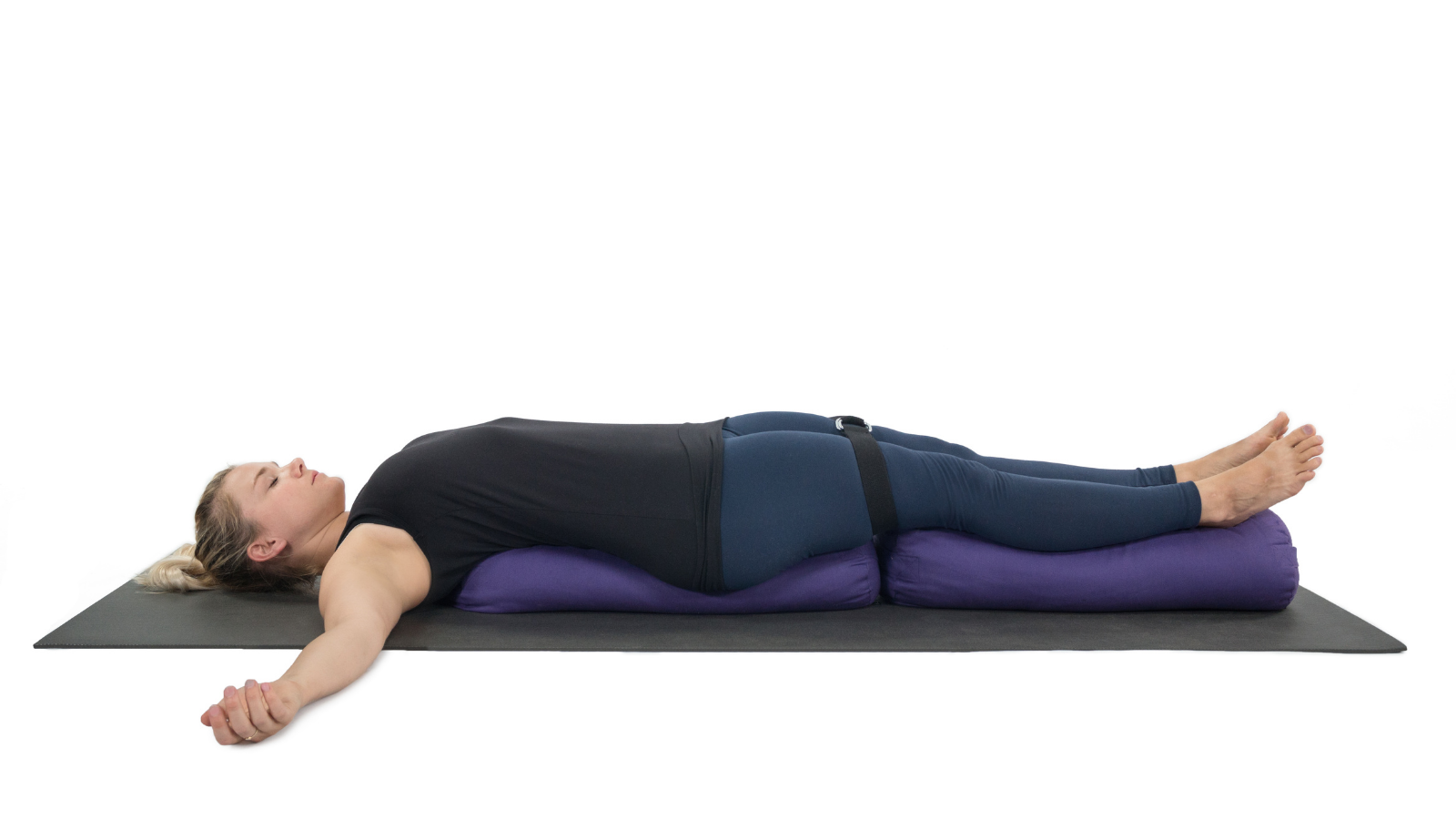
- Lie on the floor in Constructive Rest Position.
- With your arms next to the torso, bend your elbows so that your forearms are vertical. Now press your upper arms into the floor and arch your low back and ribcage away from the floor. Straighten your arms alongside your body again.
- Press your feet into the floor and extend your knees out away from the pelvis in order to lift your hips up. (Avoid simply pushing up with the glutes, as this can cause hyperextension in the hip joints.)
- Clasp your hands underneath you and rock your shoulders from side to side so that you are on the tops of your shoulders as much as possible.
- Keep extending your knees out, away from the body, and take 5 to 10 deep breaths.
- To exit the pose, extend your arms out overhead, along the floor. Stretch through the arms as you slowly lower your back onto the floor. Once your back is resting on the floor, you can keep them overhead if that is comfortable. But if it’s not comfortable, place your arms alongside your body.
Wind-Releasing Pose (Apanasana)
Okay. So this is not really an official heart-opening pose, but it’s important to add a forward bend into the mix. So far, this practice has included a lateral bend, a twist, and two backbends. A forward bend is in order.
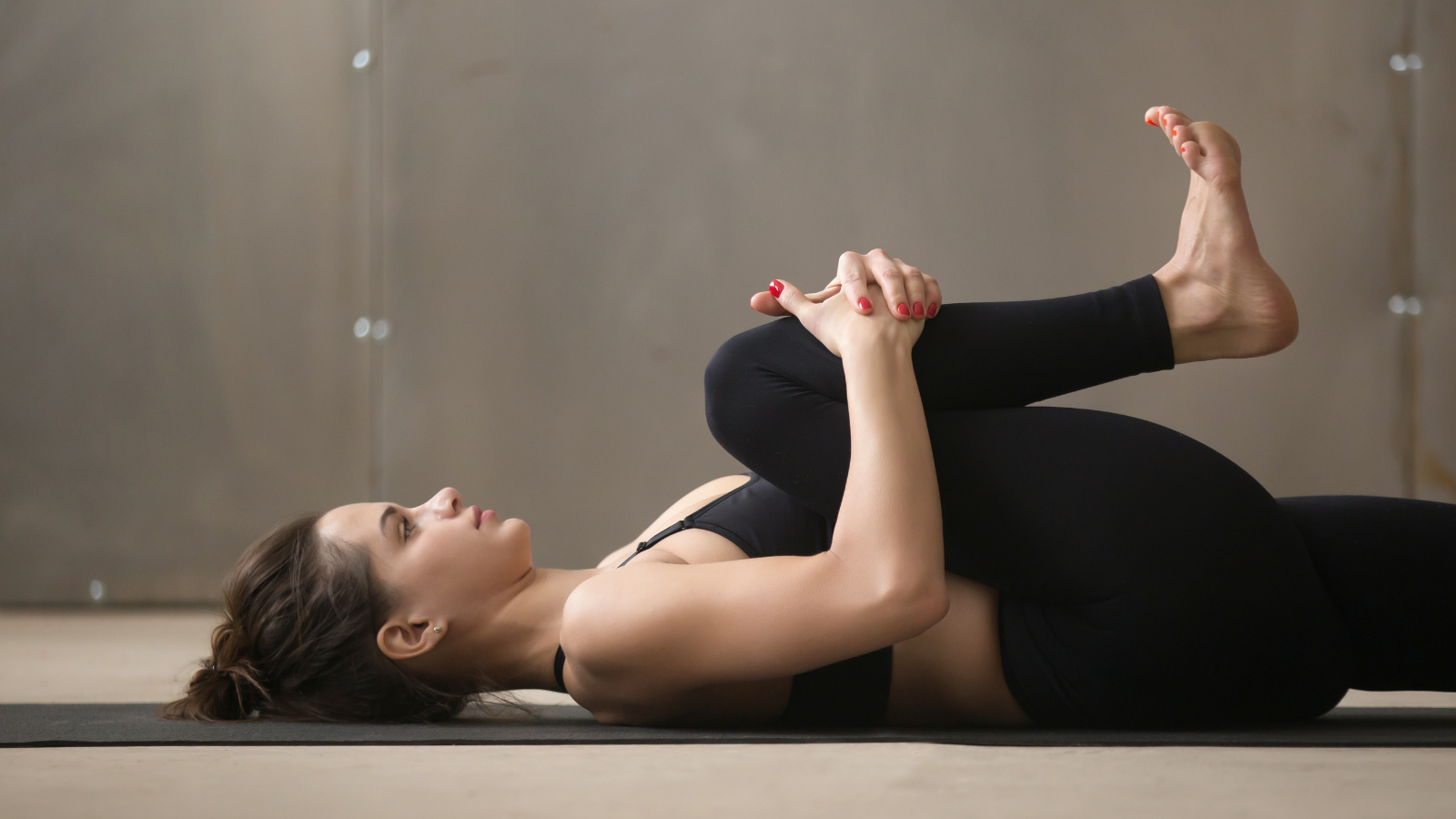
- From Constructive Rest Position, draw your knees in toward your chest. Roll side to side, up and down the spine, or circle your legs. Do whatever feels like a good balance after practicing backbends.
Relaxation Pose (Savasana)
What would a heart-opening practice be without Savasana? After practicing backends, it’s nice to put support under your legs to release tension in your lumbar area. The simplest way to do this is to roll up a blanket and place it under your knees. Give yourself the gift of time in Savasana. Stay for 10 to 15 minutes or more.
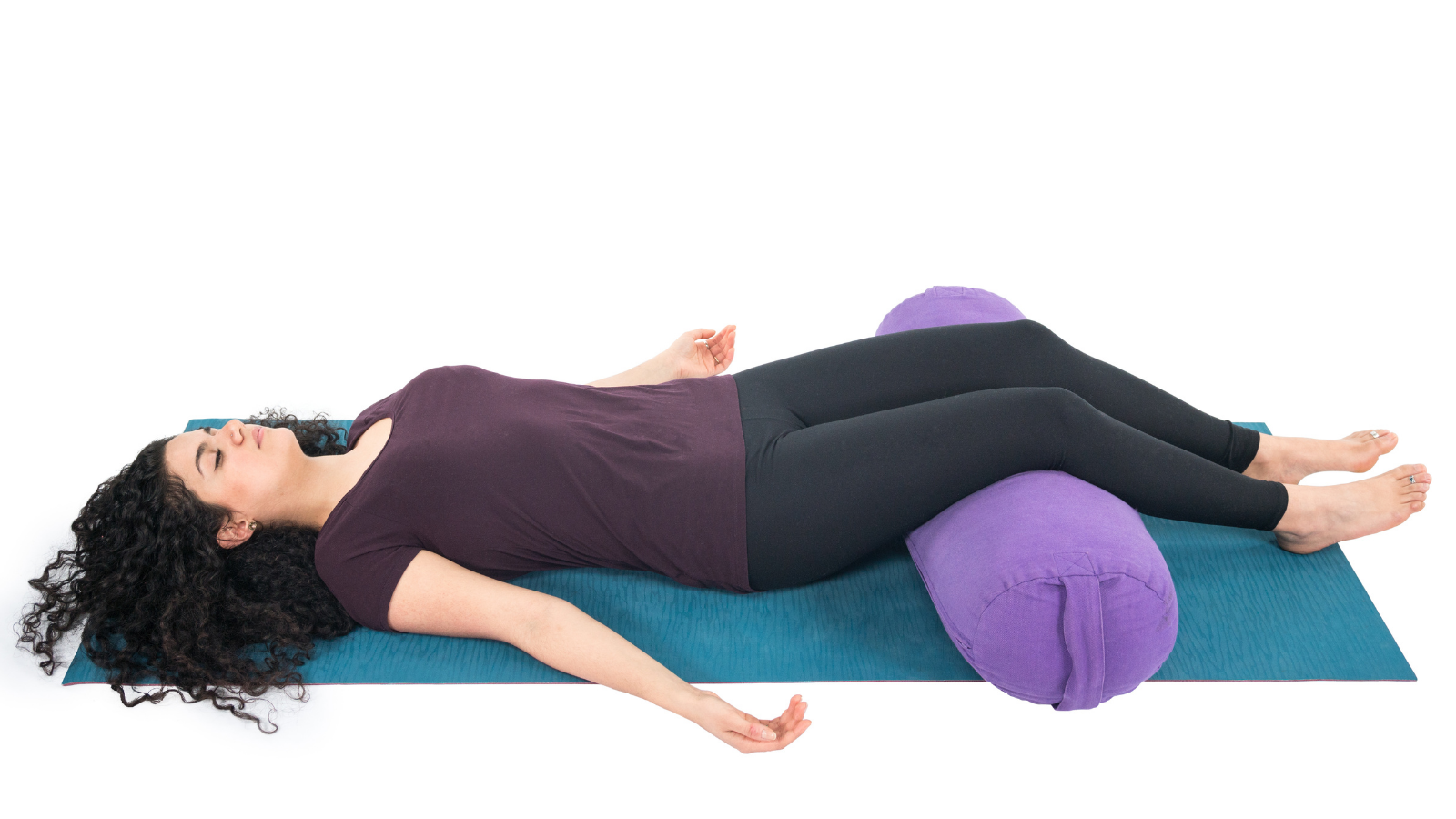
Also, read...
Warrior I Pose: 5 Strengthening Variations
Deepening Your Home Yoga Practice: An Interview with Judith Hanson Lasater
4 Easy Ways to Use a Sandbag in Yoga Practice
Related courses
Breath as Medicine: Yogic Breathing for Vital Aging
Yoga and Myofascial Release: Releasing Chronic Tension with the Bodymind Ballwork Method
Yoga and Detoxification: Tips for Stimulating Lymphatic Health

Charlotte Bell began practicing yoga in 1982 and began teaching in 1986. She was certified by B.K.S. Iyengar in 1989 following a trip to Pune. In 1986, she began practicing Insight Meditation with her mentors Pujari and Abhilasha Keays. Her asana classes blend mindfulness with physical movement. Charlotte writes a column for Catalyst Magazine and serves as editor for Yoga U Online. She is the author of two books: Mindful Yoga, Mindful Life, and Yoga for Meditators, both published by Rodmell Press. She also edits Hugger Mugger Yoga Products’ blog and is a founding board member for GreenTREE Yoga, a non-profit that brings yoga to underserved populations. A lifelong musician, she plays oboe and English horn in the Salt Lake Symphony and the folk sextet Red Rock Rondo whose 2010 PBS music special won two Emmys.
Resources
- Donna Farhi’s The Breathing Book



